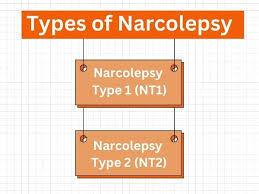
Narcolepsy Types: Understanding Type 1 and Type 2 Differences
Narcolepsy is a complex sleep disorder characterized by excessive daytime sleepiness and disturbances in REM sleep. This blog delves into the different types of narcolepsy, their symptoms, diagnosis methods, treatment approaches, and ongoing research efforts.
Introduction to Narcolepsy Types
Narcolepsy is broadly categorized into two main types:
-
Narcolepsy Type 1 (NT1) with Cataplexy: This type involves the classic symptoms of narcolepsy along with cataplexy, a sudden loss of muscle tone often triggered by strong emotions.
-
Narcolepsy Type 2 (NT2) without Cataplexy: NT2 lacks cataplexy but shares the excessive daytime sleepiness characteristic of narcolepsy.
Narcolepsy Type 1 (with Cataplexy): Symptoms and Diagnosis
Narcolepsy Type 1 is characterized by:
- Excessive Daytime Sleepiness (EDS): Persistent feeling of tiredness and a strong urge to nap throughout the day.
- Cataplexy: Sudden muscle weakness or paralysis triggered by emotions such as laughter, anger, or surprise.
- Hallucinations: Vivid dream-like experiences during the transition between wakefulness and sleep.
- Sleep paralysis: temporary inability to move or speak when falling asleep or waking up.
- Disrupted Nighttime Sleep: Fragmented sleep patterns with frequent awakenings.
Diagnosing NT1 typically involves a combination of medical history review, symptom assessment, overnight polysomnography (sleep study), and multiple sleep latency test (MSLT) to evaluate daytime sleepiness and detect REM sleep abnormalities.
Narcolepsy Type 2 (without Cataplexy): Symptoms and Diagnosis
Narcolepsy Type 2 presents similar symptoms to NT1, primarily excessive daytime sleepiness, without cataplexy. Other symptoms may include:
- Hallucinations
- Sleep paralysis
- Disrupted nighttime sleep
Diagnosis of NT2 also involves medical history evaluation, symptom assessment, and sleep studies (polysomnography and MSLT) to confirm the presence of excessive daytime sleepiness and rule out other sleep disorders.
Key Similarities and Differences
While both types of narcolepsy share the core symptom of excessive daytime sleepiness, the presence or absence of cataplexy distinguishes them.
- Similarities: Both NT1 and NT2 may involve hallucinations, sleep paralysis, and disrupted nighttime sleep.
- Differences: NT1 includes cataplexy, a hallmark symptom not typically present in NT2. This distinction often guides treatment decisions and prognosis.
Treatment Approaches for Each Type
Treatment strategies for narcolepsy focus on managing symptoms and improving quality of life:
- Medications: stimulants such as Modvigil 200 and Modvigil 200 promote wakefulness.
- Antidepressants: Selective serotonin reuptake inhibitors (SSRIs) or serotonin and norepinephrine reuptake inhibitors (SNRIs) for cataplexy in NT1.
- Sodium Oxybate: A central nervous system depressant that can improve nighttime sleep and reduce cataplexy attacks.
- Lifestyle Modifications: Scheduled naps, maintaining regular sleep schedules, and avoiding sleep disruptors like alcohol and large meals before bedtime.
Research and Future Directions
Ongoing research aims to deepen understanding and improve treatment outcomes for narcolepsy:
- Genetic Studies: Exploring genetic markers associated with narcolepsy susceptibility.
- Neuroscience Advances: Investigating the role of neurotransmitters, particularly hypocretin, in sleep-wake regulation.
- Therapeutic Innovations: Developing novel medications and treatment modalities to address specific symptoms and enhance overall management.
In conclusion, narcolepsy presents significant challenges but can be effectively managed with a comprehensive treatment approach tailored to the specific type and symptoms. Ongoing research holds promise for advancing diagnostic techniques and therapeutic options, ultimately improving the lives of individuals living with narcolepsy.


